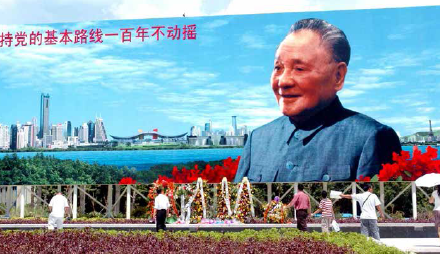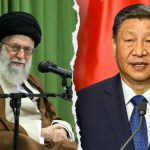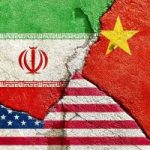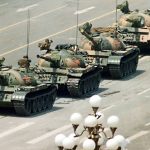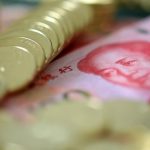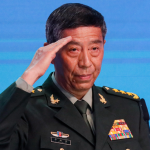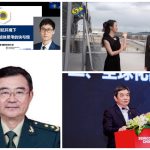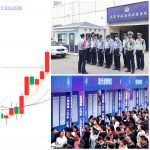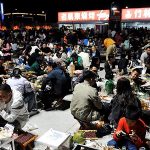BY BRADLEY A. THAYER AND LIANCHAO HAN
China’s leaders are aggressively advancing the strategic narrative of a “Community of Common Destiny” for the world, also known as “The Common Destiny of Mankind.” Chinese leadership designed this strategic narrative to project an inspiring and benign vision to international audiences and to gain support, while simultaneously masking the People’s Republic of China’s hegemonic ambitions. The Chinese Communist Party (CCP) leaders believe the world is undergoing the greatest changes in a century with the decline of Western states, including the United States. China’s rise has fundamentally altered international politics. The U.S. is in decline, they believe, and the CCP sees an opportunity to impose its global vision on the West and the rest of the world. To accomplish this, they need an appealing narrative.
This is a momentous development, significant for five reasons:
First, it allows China to “reset the clock” and start a new global order unfettered by Western ideologies or political principles such as democracy and the rule of law. China no longer will be focused solely on China and its economic growth. The “community of shared future for mankind” narrative marks the end of China’s “tone deafness,” or the expectation that the world will recognize of its own accord the greatness of China.
Second, the narrative’s role is to reduce balancing against China, diminish its image as a threat and ensure regime stability. The narrative minimizes, maybe even conceals, China’s true role and ambition. It stresses the respect of China’s totalitarian political model, casting the CCP as a defender of world peace and stability that fights only for a more equitable international order in which different political systems may coexist and selflessly promotes a brighter economic future for the world. In reality, China is doing the opposite, and its abuses in the application of that power, such as “debt-trap” agreements, have hindered its position in global politics.
This narrative, however, cannot prevent balancing against China because that is caused by the prodigious growth of its capabilities and its malign ideology and grand ambitions. The “common destiny” narrative does allow China some concealment to advance its interests under the guise of altruistic leadership.
Because there is no content to the objective of “common destiny,” it can be altered to fit any local environment and economic, diplomatic or security goal. In the West, the emphasis of the common destiny is likely to be voiced as the continuation of “win-win” economic development and wealth creation that would see China joining Western levels of per capita GDP. China wants to position itself to capitalize upon popular Western political concerns and join in the West’s space exploration, medical and scientific progress, and technological advancements.
Third, the objective of the “common destiny” narrative is to inspire people around the world who otherwise would be indifferent or unsympathetic to China’s rise and ambitions. The narrative allows the Chinese to unite the global population in a common world effort, one that conveys a sense of importance and implies meaning for those engaged this labor. It permits local elites a rationalization for supporting a relationship with China and protecting the alliance from serious critique.
Fourth, the generation of the strategic narrative must be understood in the context of confrontation with the United States. Beijing consciously emulates the historical ability of the U.S. to project an inspiring global message. This shows that China has learned well. The narrative is China’s first successful move in an ideological battle for the future — who gets to define the global future is now contested space.
In the context of this direct competition with the U.S., the “common destiny” narrative is China’s effort to establish ideological superiority over the democratic message the U.S. advances, and to unite allied states behind the message. It enables China to undermine the U.S. in Asia, Europe and the Global South. It’s also a narrative that might be acceptable to Western policymakers to minimize balancing and the perception of China as a threat. For all audiences, the narrative advances the hopeful message that the world has one destiny, around which all may unite. The process of advancing that destiny and its terminus, of course, are not defined. In reality, they are the need to serve China’s grand strategic objectives.
Fifth, the narrative still must be Han-centric enough to inspire the Han. Although the “common destiny” narrative is directed at international audiences, it is also targeted at domestic CCP elites and the general Chinese population. The implicit content of the narrative is that it is the Han, and the Party, who are directing the rest of the world’s population toward its common destiny.
China appears to be advancing a popular, benign and inspiring global narrative. The reality is much different: Communist China is hardly benign. The CCP has brought about the perverted renaissance of concentration camps for China’s Muslim minority in Xinjiang. At least 1 million, possibly as many as 2 million, Uighurs are imprisoned in these colorless buildings surrounded by barbed wire. These victims are harassed, mistreated, tortured and targeted for coercive and often violent “thought-transformation” to ensure loyalty to the CCP.
The world should see Communist China for what it is: a dangerous, supremacist superpower intent upon replacing the United States as the world’s dominant state, and replacing the liberal values and political principles of today’s world with the Party’s tyrannical beliefs. The world’s common destiny is freedom, not oppression.
This article first appeared in The Hill on 01/09/20 11:00 AM ET




